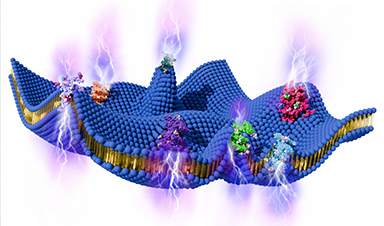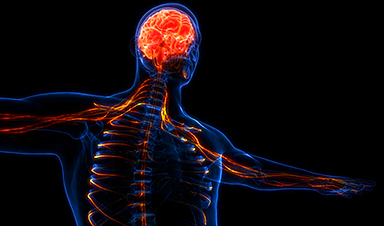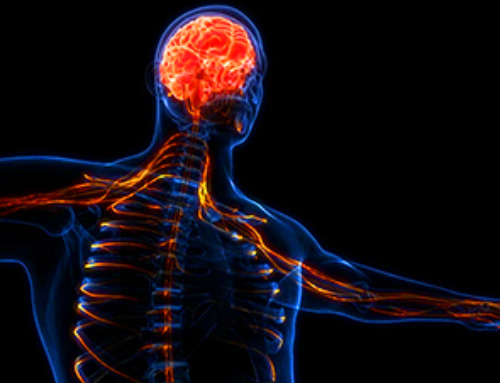The Coalition for Epidemic Preparedness Innovations (CEPI) and the World Health Organization (WHO) today called on researchers and governments to strengthen and accelerate global research to prepare for the next pandemic.
They emphasized the importance of expanding research to encompass entire families of pathogens that can infect humans–regardless of their perceived pandemic risk–as well as focusing on individual pathogens. The approach proposes using prototype pathogens as guides or pathfinders to develop the knowledge base for entire pathogen families.
At the Global Pandemic Preparedness Summit 2024 held in Rio de Janeiro, Brazil, WHO R&D Blueprint for Epidemics issued a report urging a broader-based approach by researchers and countries. This approach aims to create broadly applicable knowledge, tools and countermeasures that can be rapidly adapted to emerging threats. This strategy also aims to speed up surveillance and research to understand how pathogens transmit and infect humans and how the immune system responds to them.
The report’s authors likened its updated recommendation to imagining scientists as individuals searching for lost keys on a street (the next pandemic pathogen). The area illuminated by the streetlight represents well-studied pathogens with known pandemic potential. By researching prototype pathogens, we can expand the lighted area, gaining knowledge and understanding of pathogen families that might currently be in the dark. The dark spaces in this metaphor include many regions of the world, particularly resource-scarce settings with high biodiversity, which are still under monitored and understudied. These places might harbour novel pathogens, but lack the infrastructure and resources to conduct comprehensive research.
“WHO’s scientific framework for epidemic and pandemic research preparedness is a vital shift in how the world approaches countermeasure development, and one that is strongly supported by CEPI. As presented at the Global Pandemic Preparedness Summit 2024 in Rio de Janeiro, Brazil, this framework will help steer and coordinate research into entire pathogen families, a strategy that aims to bolster the world’s ability to swiftly respond to unforeseen variants, emerging pathogens, zoonotic spillover, and unknown threats referred to as pathogen X”, said Dr Richard Hatchett, CEO of CEPI.
The prioritization work underpinning the report involved over 200 scientists from more than 50 countries, who evaluated the science and evidence on 28 virus families and one core group of bacteria, encompassing 1652 pathogens. The epidemic and pandemic risk was determined by considering available information on transmission patterns, virulence, and availability of diagnostic tests, vaccines, and treatments.
CEPI and WHO also called for globally coordinated, collaborative research to prepare for potential pandemics.
History teaches us that the next pandemic is a matter of when, not if. It also teaches us the importance of science and political resolve in blunting its impact. We need that same combination of science and political resolve to come together as we prepare for the next pandemic. Advancing our knowledge of the many pathogens that surround us is a global project requiring the participation of scientists from every country.”
Dr. Tedros Adhanom Ghebreyesus, WHO Director-General
To facilitate this, WHO is engaging research institutions across the world to establish a Collaborative Open Research Consortium (CORC) for each pathogen family, with a WHO Collaborating Centre acting as the research hub for each family.
These CORCs around the world will involve researchers, developers, funders, regulators, trial experts and others, with the aim to promote greater research collaboration and equitable participation, particularly from places where the pathogens are known to or highly likely to circulate.
News
Cell Membranes May Act Like Tiny Power Generators
Living cells may generate electricity through the natural motion of their membranes. These fast electrical signals could play a role in how cells communicate and sense their surroundings. Scientists have proposed a new theoretical [...]
This Viral RNA Structure Could Lead to a Universal Antiviral Drug
Researchers identify a shared RNA-protein interaction that could lead to broad-spectrum antiviral treatments for enteroviruses. A new study from the University of Maryland, Baltimore County (UMBC), published in Nature Communications, explains how enteroviruses begin reproducing [...]
New study suggests a way to rejuvenate the immune system
Stimulating the liver to produce some of the signals of the thymus can reverse age-related declines in T-cell populations and enhance response to vaccination. As people age, their immune system function declines. T cell [...]
Nerve Damage Can Disrupt Immunity Across the Entire Body
A single nerve injury can quietly reshape the immune system across the entire body. Preclinical research from McGill University suggests that nerve injuries may lead to long-lasting changes in the immune system, and these [...]
Fake Science Is Growing Faster Than Legitimate Research, New Study Warns
New research reveals organized networks linking paper mills, intermediaries, and compromised academic journals Organized scientific fraud is becoming increasingly common, ranging from fabricated research to the buying and selling of authorship and citations, according [...]
Scientists Unlock a New Way to Hear the Brain’s Hidden Language
Scientists can finally hear the brain’s quietest messages—unlocking the hidden code behind how neurons think, decide, and remember. Scientists have created a new protein that can capture the incoming chemical signals received by brain [...]
Does being infected or vaccinated first influence COVID-19 immunity?
A new study analyzing the immune response to COVID-19 in a Catalan cohort of health workers sheds light on an important question: does it matter whether a person was first infected or first vaccinated? [...]
We May Never Know if AI Is Conscious, Says Cambridge Philosopher
As claims about conscious AI grow louder, a Cambridge philosopher argues that we lack the evidence to know whether machines can truly be conscious, let alone morally significant. A philosopher at the University of [...]
AI Helped Scientists Stop a Virus With One Tiny Change
Using AI, researchers identified one tiny molecular interaction that viruses need to infect cells. Disrupting it stopped the virus before infection could begin. Washington State University scientists have uncovered a method to interfere with a key [...]
Deadly Hospital Fungus May Finally Have a Weakness
A deadly, drug-resistant hospital fungus may finally have a weakness—and scientists think they’ve found it. Researchers have identified a genetic process that could open the door to new treatments for a dangerous fungal infection [...]
Fever-Proof Bird Flu Variant Could Fuel the Next Pandemic
Bird flu viruses present a significant risk to humans because they can continue replicating at temperatures higher than a typical fever. Fever is one of the body’s main tools for slowing or stopping viral [...]
What could the future of nanoscience look like?
Society has a lot to thank for nanoscience. From improved health monitoring to reducing the size of electronics, scientists’ ability to delve deeper and better understand chemistry at the nanoscale has opened up numerous [...]
Scientists Melt Cancer’s Hidden “Power Hubs” and Stop Tumor Growth
Researchers discovered that in a rare kidney cancer, RNA builds droplet-like hubs that act as growth control centers inside tumor cells. By engineering a molecular switch to dissolve these hubs, they were able to halt cancer [...]
Platelet-inspired nanoparticles could improve treatment of inflammatory diseases
Scientists have developed platelet-inspired nanoparticles that deliver anti-inflammatory drugs directly to brain-computer interface implants, doubling their effectiveness. Scientists have found a way to improve the performance of brain-computer interface (BCI) electrodes by delivering anti-inflammatory drugs directly [...]
After 150 years, a new chapter in cancer therapy is finally beginning
For decades, researchers have been looking for ways to destroy cancer cells in a targeted manner without further weakening the body. But for many patients whose immune system is severely impaired by chemotherapy or radiation, [...]
Older chemical libraries show promise for fighting resistant strains of COVID-19 virus
SARS‑CoV‑2, the virus that causes COVID-19, continues to mutate, with some newer strains becoming less responsive to current antiviral treatments like Paxlovid. Now, University of California San Diego scientists and an international team of [...]





















